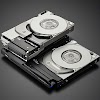What is System Software? A Comprehensive Guide for Beginners
Understanding System Software
System software is a type of computer program designed to run and manage the hardware and software resources on a computer. It acts as an intermediary between the hardware and the application software that you use every day, such as word processors, web browsers, and games. Without system software, your computer would be unable to function effectively, as it provides the necessary environment for the application software to run.
Think of system software as the foundation of a building. Just as a building needs a strong foundation to stand and support the structure above, a computer needs system software to operate and manage all its components efficiently.
Types of System Software
There are several types of system software, each serving a specific purpose to ensure that your computer operates smoothly. Below are the main categories:
1. Operating Systems (OS)
The operating system is the most critical type of system software. It manages all the hardware components of your computer, such as the CPU, memory, storage, and peripheral devices like printers and keyboards. The OS also provides a user interface that allows you to interact with the computer.
Popular operating systems include:
- Microsoft Windows: Widely used in personal and business computers.
- macOS: The operating system for Apple computers.
- Linux: An open-source OS popular among developers and server administrators.
- Android and iOS: Operating systems for mobile devices.
2. Device Drivers
Device drivers are specialized system software that allow the operating system to communicate with the hardware components of your computer. For example, your computer's graphics card needs a driver to render images on the screen, and your printer requires a driver to understand print commands from your computer.
Without drivers, your operating system wouldn't be able to control the hardware, leading to malfunctioning devices or limited functionality.
3. Firmware
Firmware is a type of system software embedded directly into the hardware of a device. It provides low-level control over the device's specific functions, such as booting up the computer or managing basic hardware settings. Firmware is stored in read-only memory (ROM), making it a permanent part of the device.
Examples of firmware include the BIOS (Basic Input/Output System) in computers, which initializes hardware components during startup, and the firmware in smartphones that controls basic functionalities.
4. Utility Software
Utility software includes a wide range of programs that perform specific tasks to maintain and optimize your computer's performance. These utilities often come bundled with the operating system but can also be installed separately.
Common utility software includes:
- Antivirus programs: Protect your computer from malware and viruses.
- Disk management tools: Help you organize and manage your storage drives.
- Backup software: Ensures your data is safely stored and can be restored in case of a system failure.
- File compression tools: Reduce the size of files for easier storage and transfer.
5. Language Translators
Language translators are system software that convert high-level programming languages into machine code that a computer's CPU can understand. There are three main types of language translators:
- Compilers: Convert the entire program code into machine code before execution.
- Interpreters: Translate and execute the code line by line.
- Assemblers: Convert assembly language code into machine code.
The Role of System Software in Computing
System software plays a crucial role in the overall operation and performance of a computer. Here's how:
1. Resource Management
One of the primary functions of system software, particularly the operating system, is resource management. The OS allocates and manages the computer's resources, such as the CPU, memory, and storage, ensuring that each application and process gets the necessary resources to function properly. This management prevents conflicts and maximizes efficiency.
2. User Interface
System software provides the user interface (UI) that allows you to interact with your computer. The UI can be graphical (GUI), like the desktop environment of Windows or macOS, or command-line-based (CLI), like the terminal in Linux. This interface makes it easier for users to execute commands, open applications, and manage files without needing to understand the underlying code.
3. Security and Stability
System software is responsible for maintaining the security and stability of the computer system. Operating systems include security features like user authentication, file permissions, and encryption to protect data from unauthorized access. Additionally, system software helps manage system errors and crashes, often providing tools for recovery and troubleshooting.
4. Hardware Abstraction
System software abstracts the complexities of the hardware from the user and the application software. This means that you don't need to know how a CPU or a hard drive works to use your computer effectively. The OS handles the communication between the software and hardware, ensuring that applications can run on different types of hardware with minimal adjustments.
5. Task Management
The operating system manages multiple tasks simultaneously, allowing you to run several applications at once. This is known as multitasking. The OS schedules and prioritizes tasks to ensure that critical processes receive more CPU time, while less important tasks are managed efficiently in the background
Choosing the Right System Software
Selecting the appropriate system software is essential for ensuring that your computer meets your needs. Here are a few considerations:
1. Compatibility
Ensure that the system software is compatible with your computer's hardware. For instance, not all operating systems are designed to work with every type of processor or storage device.
2. User Needs
Consider what you need your computer to do. If you're a casual user, a standard OS like Windows or macOS might suffice. However, if you're a developer or IT professional, you might prefer a more customizable OS like Linux.
If security is a top priority, choose system software that offers robust security features, including encryption, firewall protection, and regular updates.
4. Performance
The efficiency of system software can impact the overall performance of your computer. Look for software that is optimized for your hardware and has a track record of stability and speed.
5. Support and Updates
Choose system software that is regularly updated to address security vulnerabilities and improve performance. Additionally, ensure that there is adequate support available in case you encounter any issues.
Conclusion
System software is the backbone of your computer, enabling it to run smoothly and efficiently. From operating systems to device drivers and utility software, these programs are essential for managing hardware resources, providing a user interface, and ensuring the security and stability of your system. By understanding the different types of system software and their roles, you can make informed decisions about your computer setup and optimize its performance for your specific needs. Whether you're a beginner or an experienced user, appreciating the importance of system software is key to mastering the digital world.

.png)
.png)
.png)







.jpeg)







0 Comments